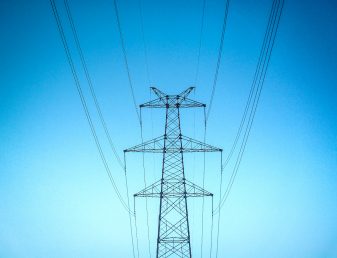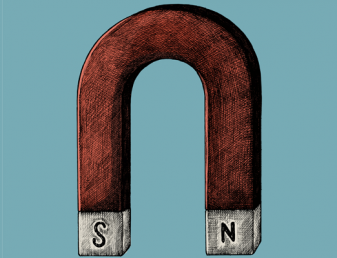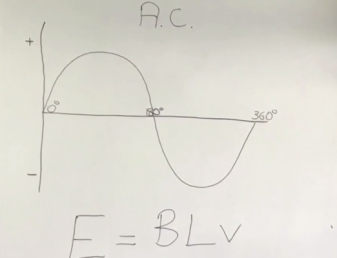This article will briefly consider the different ways that electricity is generated and transmitted in the UK.
Electricity is a convenient energy source because it is easily transmitted over distance via electricity cables, and has a wide variety of uses. However, electricity is not a primary energy source – it must be generated before it can be used, whether using coal, oil, natural gas or other fuels. Once it has been generated, the electricity goes to transformers to make it the correct voltage and then is supplied to homes and businesses through a network of cables and pylons.
How is electricity generated?
Generators transfer kinetic energy into electrical energy. This can be done in one of two ways:
- Directly – when a turbine (for example wind, hydroelectric of tidal turbines) turns the generator, producing electricity.
- Indirectly – when fuels (eg fossil fuels – coal, oil or natural gas) are used to boil water to make steam which pushes the blades of a turbine, turning the generator. In the case of power stations which generate electricity in this way, energy is lost to the environment in every stage of the process, meaning only a third of the energy stored in the fuel is converted into electrical energy.

Energy sources for electricity
In the UK electricity is generated in many different ways, utilising different fuel sources and technology. This means we have a constant supply and don’t have to be reliant on one type of power generation.
The primary energy source for electricity in the UK currently remains fossil fuels, which are burned in power stations to produce the energy. Mainly natural gas or coal is burned, while a very small amount coming from other fuels. Around a fifth of the UK’s electricity comes from nuclear reactions. These use nuclear fuels, such as uranium and plutonium. All these energy sources are non-renewable, which means once they are used up they are gone.
Fossil fuels release carbon dioxide when they burn, which has a major environmental impact and can increase global warming. Coal produces the most of carbon dioxide of the three fossil fuels, while natural gas generates the least.
Fuel for nuclear power stations is relatively cheap (although, like fossil fuels, non-renewable), but the power stations are expensive to build and care must be taken because the radioactive waste is a major health hazard and remains so for thousands of years. Nuclear fuels are not burned to release energy, which means they do not produce carbon dioxide. Instead, heat is released from changes in the nucleus in a process known as nuclear fission and this heat is used to boil water to spin turbines, driving the generators to produce the electricity. Compared to power stations using fossil fuels, nuclear power plants produce a higher amount of power for a smaller amount of fuel, however, this has to be offset with the high cost of building the plant and dealing with the waste.
What are renewable energy sources?
Renewable energy resources will never run out, their supply is not limited and they tend to generate less pollution than fossil fuels used in power stations.
Renewable energy types include:
- Solar energy (from the sun)
- Wind energy (from wind, which means they must be placed in areas which tend to be windy)
- Water energy (this can be hydroelectric power, wave machines or tidal barrages)
- Biomass energy (for example energy released from waste processes, human or animal sewage or wood or wood processing)
- Geothermal energy (from reservoirs of hot water found below the earth’s surface)

What is a transformer?
A transformer changes the voltage of an AC supply, whether that is from high-voltage to low-voltage (a step-down transformer) or from low-voltage to high-voltage (a step up transformer).
How is electricity transmitted?

The UK’s electricity is sent across the country to homes and businesses through the National Grid. The National Grid transmits electricity at low current to reduce energy lost as heat while it is being transferred across cables.
Power stations produce electricity at 25,000V. Electricity is sent through the National Grid at 400,000V, 275,000V or 132,000V. Step-up transformers at power stations produce the very high voltages needed to transmit electricity through the National Grid’s power lines. But because high voltages are too dangerous for use in the home, step-down transformers are then used locally to reduce the voltage to safe levels.






